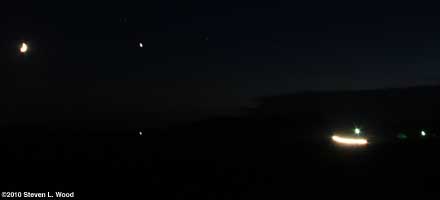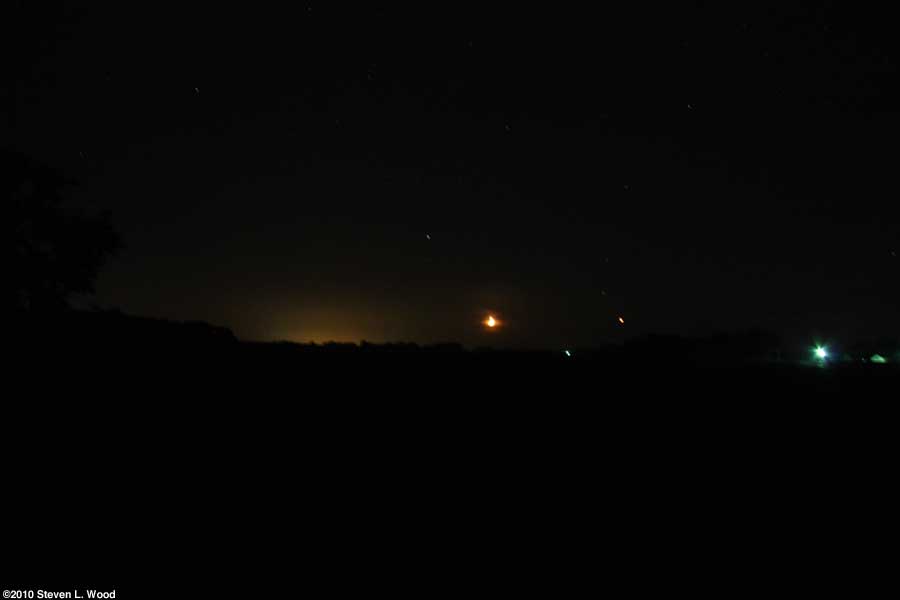mathdittos2.com
...dedicated to...hmmm, we're still figuring that one out... |
|
Carpetbaggers and Charlatans Sam Dillon has a really important article on the New York Times this week, Inexperienced Companies Chase U.S. School Funds. He relates that "dozens of companies with little or no experience are portraying themselves as school-turnaround experts as they compete for the money." Dillon quotes Rudy Crew, a former New York City schools chancellor, as saying, "This is like the aftermath of the Civil War, with all the carpetbaggers and charlatans." On the Blogs Maria Sallee's Isn’t It Obvious on Failing Schools is a good look at why it isn't obvious to the general public how misguided much of the current "reform" effort is in education. John Spencer's poignant Drop the Gavel gives a lot of reasons why studying history is important through the story of his grandfather. Obama Signs Bill to Prevent Teacher Layoffs (late update) President Obama signed into law today a $26 billion bill to help save teacher jobs and shore up state Medicaid payments. The House passed the bill earlier today after being called back into emergency session. CNN's Obama signs bill to prevent teacher layoffs relates that the bill "is designed to save the jobs of approximately 160,000 teachers across the country, as well as create and save positions for police officers, firefighters and nurses, according to Democratic leaders." Alyson Klein's House Passes Bill Aimed at Saving Teachers' Jobs on Education Week gives a good bit more detail about the situation. She notes that while "some school districts are preparing to rehire staff members who had received pink slips," others "are likely to use the funds to dodge future layoffs." While this bill is commendable, the hype about saving teacher jobs for this fall is a bit misleading. School corporations knowing they would face budget shortfalls made layoff decisions in the spring, often according to their local labor contract. Teachers may be recalled because of the bill, but it will be weeks, if not months, before funds begin to reach the states and local school systems. Indecisive Democrats and obstructionist Republicans should equally share the blame of damage done to children's education because of the tardiness of the measure. App Store Volume Purchase Program A posting today on the Tennessee Apple mailing list (listserv) by Apple Rep Jim Eden said:
Send Feedback to |
|
Tony Phillips tells about a double treat coming up for astronomy buffs tomorrow night in Planets Align for the Perseid Meteor Shower. Dr. Phillips writes that Venus, Saturn, Mars and the crescent Moon will be in tight conjunction until 10 pm or so on August 12. "When they leave, following the sun below the horizon, you should stay, because that is when the Perseid meteor shower begins. From 10 pm until dawn, meteors will flit across the starry sky in a display that's even more exciting than a planetary get-together." As is my usual practice, I used the free, open source Stellarium program to help me visualize where in the night sky to look for the conjunction of the planets. Here in west, central Indiana, Stellarium helped me remember that it won't be quite dark when the moon begins to set around 9:15ish (EDT). I also used Stellarium's info feature by clicking on the planets to obtain their apparent magnitude for tomorrow night. If you've forgotten your basic astronomy, the magnitude scale originally ranked stars (and planets) visible to the naked eye from 6 (dimmest) to 1 (brightest). In the 1800's, the scale was revised to accommodate and differentiate very dim and bright stars. for example, the sun tomorrow evening before sunset will have an apparent magnitude of -26.71. The revision of the scale used negative values for very bright objects. Anyway, tomorrow night's values are: Mars (1.5); Venus (-4.17); Saturn (1.26); and the crescent moon (-8.82) with just 5% of it illuminated. Even Mercury (0.71) gets into the act a bit earlier in the evening, setting around 9:20 P.M. (EDT) here. Getting back to the Perseids, Dr. Phillips fills us in on a bit of astronomical history:
The best time to view the meteor shower is "during the darkest hours before dawn on Friday morning, Aug. 13th, when most observers will see dozens of Perseids per hour." But even if you want to catch some sleep tomorrow night, there should be some shooting stars visible after dark. they may appear all over the sky but "all of their tails will point back to the radiant" near Perseus in the northeastern sky. The Stellarium image below with the Perseid radiant marked is from 12:30 A.M. (EDT) on August 13.
It's all free, and you don't even need a telescope to enjoy the show. What Does Each State Get A DOE posting last evening had a download link (208K PDF document) that tells how much each state will receive from the recently enacted edujobs bill. (See table below.) The funds are being "distributed to states by a formula based on population figures." The various states "can distribute their funding to school districts based on their own primary funding formula or districts' relative share of federal Title I funds."
And since this all should have been done last spring, the DOE "will streamline the application process so that states can submit applications within days. The Department will award funding to states within two weeks of their submission of an approvable application." So, if you got laid off and were hoping to be recalled due to this new funding, it may be a while. Turnarounds Walt Gardner's Is Teacher Empowerment Finally Here is a good read today. He writes about Teach Plus, a non-profit organization financed by the Gates Foundation, in which experienced teachers still teach a full load in turnaround schools, but also act as paid leaders for their grade level. (Note: The Teach Plus site was down while I was writing this posting.) Walt notes that "It's important to remember that high on the list of reasons for teacher turnover is dissatisfaction with teaching conditions, and sagely adds, "When teachers feel that their voices are not being heard, they become frustrated and angry until they finally decide to quit." Michael Winerip's Lesson Plan in Boston Schools: Don’t Go It Alone covers some of the same ground as Walt Gardner does. Winerip writes that the Obama administration’s turnaround options, "From Washington this makes abundant good sense, a way to galvanize rapid and substantial change in schools for children who need it most. In practice, on the ground, it is messy for the people most necessary for turning a school around — the teachers — and not always fair." Odds 'n' Ends
So if you're thinking about getting out, you might find some creative inspiration from the articles linked above. And of course, as you mull it over, I'd recommend listening to Johnny Paycheck's Take This Job And Shove It How the iPad May Help Students with Autism
Leo's father believes his son's interest in the iPad has lengthened his attention span and said, "It gives you hope, and you begin to expect more instead of less." Harrell adds:
AssistiveWare has, of course, created a version of Proloque2Go for the iPad. It's not cheap, running at $190, but it appears to be one of those apps that can do great things in some cases for kids with autism. Museums on the App Store
The Smithsonian takes a bit more creative tack with their MEanderthal New D.C. Teachers (or Cannon Fodder) Bill Turque writes in D.C. public school teachers begin orientation ahead of start of academic year on the Washington Post of the 400 new D.C. teachers going through their orientation:
On his blog, Bill writes:
Bill is absolutely correct in his appraisal of what the new teachers face in their first year. And that really is a bit unfair. While adequate observation, supervision and guidance of new teachers is essential, I think back to my first year(s) of teaching and remember some of the goofs my kids endured and survived. Being under a microscope would have only made things worse. And entering a system where there is a constant revolving door of personnel can't be good for the kids. And About That Tight Conjunction... Our stargazing last night just didn't work out. After carrying on for several paragraphs on Wednesday about the evening conjunction of Mars, Venus, and Saturn, with the Moon just a few degrees off, it turned out to be a cloudy evening. It made for a pretty sky and some challenging photography, but it sure wasn't what I wanted. The best shot I got is on the right below of Venus and the Moon. The full sized shot on the left actually shows Venus with a bright, white dot to its left. Unfortunately, that dot, which isn't visible on the smaller, optimized image, turned out to be a nearby bright star instead of Mars.
The clouds did clear enough that I was able to get out early this morning and see a bit of the meteor shower. Odds 'n' Ends A lot of folks are headed back to school about now. Winnie Hu's story today in the New York Times, After Layoffs, Yonkers Trims Curriculum, could really be almost any city or school corporation around the country. Students and teachers will be returning to reduced offerings and larger classes due to cutbacks by almost all states in school funding. Teachers will continue to do amazing things with kids despite all the negative press about "bad teachers" and "failing schools." And various government officials and education "experts" who've not taught long enough, if at all, to really understand teaching will continue to offer their remedies for the problems that educators face. It's not a good way to start a school year. I got hooked last night watching my favorite teacher movie, Teachers Conjunction of Mars, Venus, and Saturn
The image at right is a Stellarium creation of our night sky at around 9:30 P.M. (EDT). At risk of beating the subject to death, as I've already praised the open source planetarium application this week, you can't beat it for predicting where things will be in the night sky or for identifying objects in the night sky. As it got darker, I was able to zero in a bit more on just the planets, revealing just a hint of detail of Mars. It made me wish I'd lugged out my telescope, but I actually had my hands full with keeping from bumping the tripod and getting the shots I wanted. When I began processing the photos last night, I got a bit of a surprise from the one below and several like it.
One of the joys of digital photography is that you can take as many shots as you want without incurring any expense beyond the equipment you already have. I took 78 exposures, the equivalent of about three rolls of 35mm film last night, experimenting with different exposure lengths and lens settings, and playing with the composition of the images. Years ago when working with film, I would have probably just taken a single roll because of the expense of the film and processing. Before packing it in for the evening (by then I was too hot and mosquito bitten to think about staying out longer to see a few more Perseid meteors), I composed a night landscape shot a bit to the left of where I'd been shooting. It shows the glow of the Marathon refinery in nearby Robinson, Illinois, the moon and the conjunction in the center, and our neighbor's lights to the right. My "Toys" Used for the Conjunction Photoshoot A year ago I finally got back to an SLR camera. After some bad experiences with Nikon "service," I "went home" to Canon for my digital SLR. I still have my 30+ year-old Canon AE-1 SLR in good working order that I bought when I got out of professional photography many years ago. So far, I'm glad I went with a Canon. Below are the "toys" I used last night.
Like most folks, I bought my XSi with the standard kit lens. I recommend folks buy just a camera body and then a better lens than the rather disappointing kit lens supplied by Canon. I use my 17-85 lens as my standard, walking around lens. It's a good bit heavier than the kit lens, but has better range and image quality. And of course, my XSi is now a bit behind the times. When I bought it, the Canon EOS Rebel T1i If you're camera shopping, be sure to check out whatever brand and model you're interested in on both Buy.com Have a great weekend!
Ads shown on this site do not represent an endorsement or warranty of any kind of products or companies shown. Ads shown on archive pages may not represent the ads displayed in the original posting on Educators' News. |
| Previous Week |
©2010 Steven L. Wood

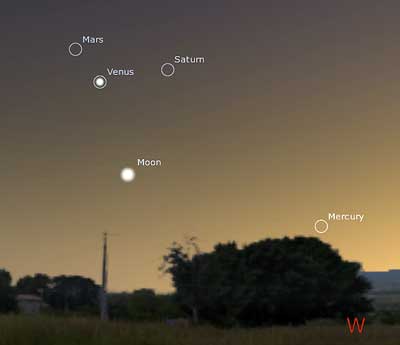 Planets Align for the Perseid Meteor Shower
Planets Align for the Perseid Meteor Shower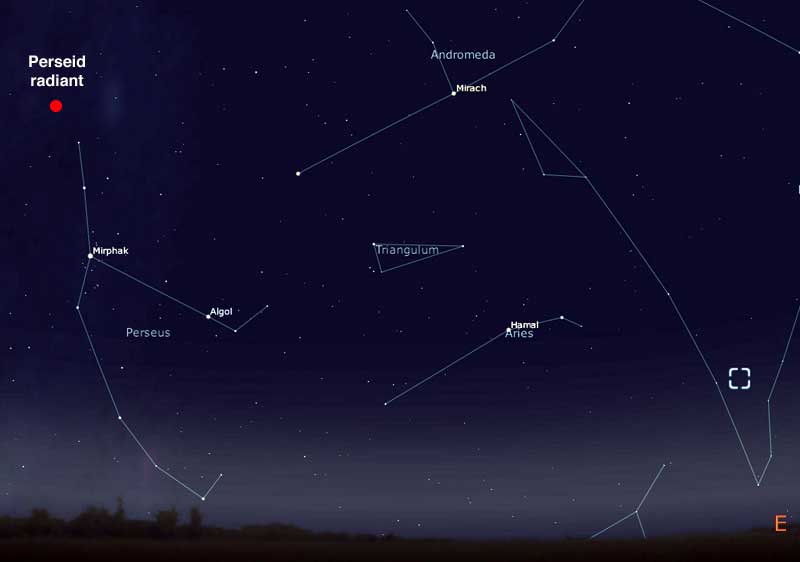


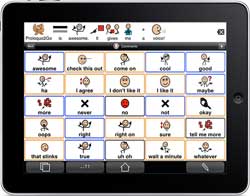

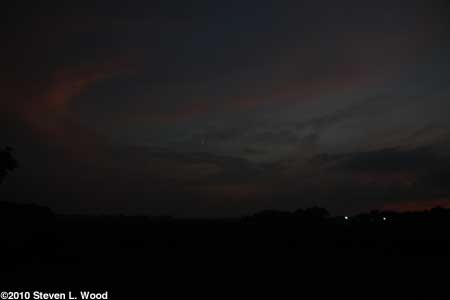

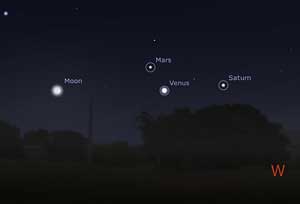
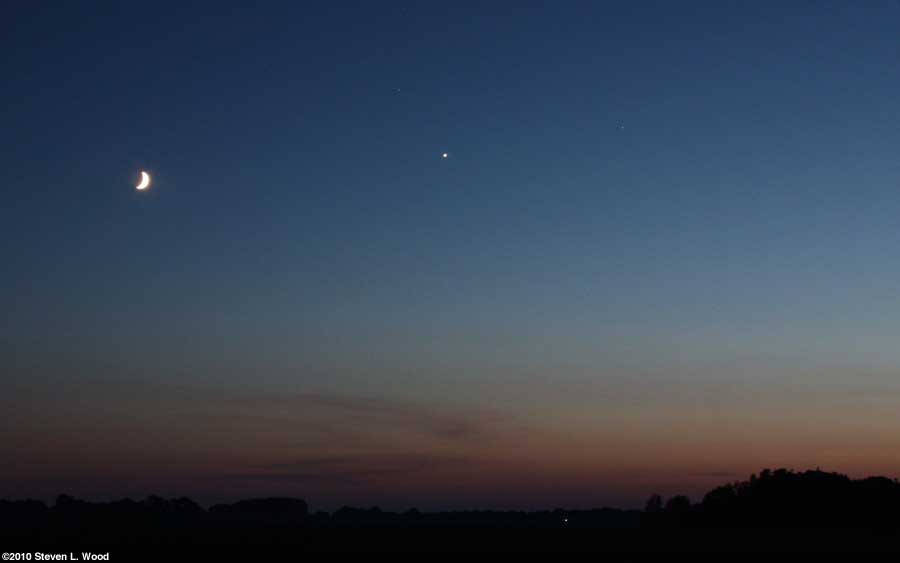

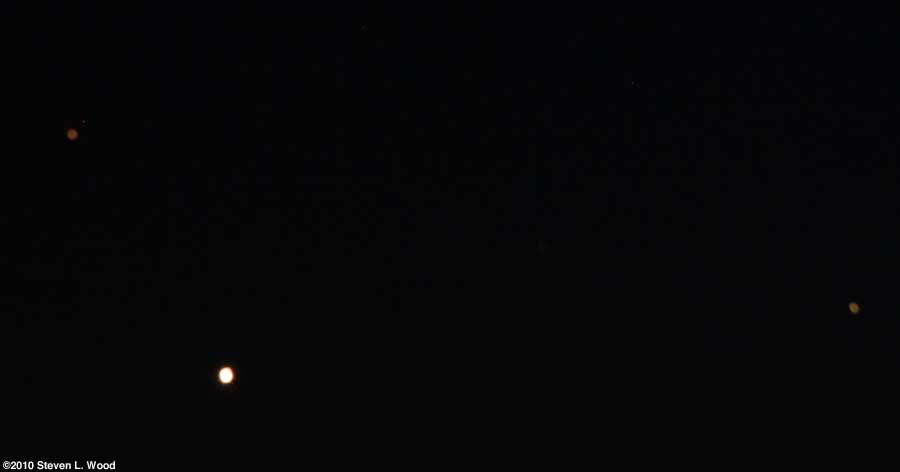
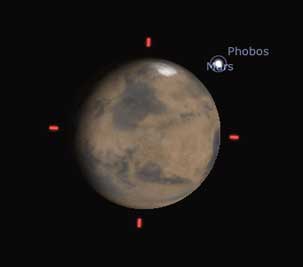
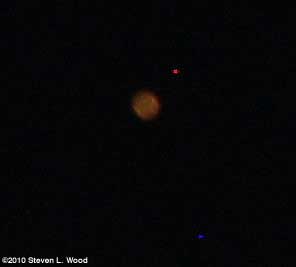 As I looked at the image, I noticed that Mars (upper left) appeared to either have a moon or a background star visible near it. I quickly fired up Stellarium and saw that the small object was probably Phobos, one of the moons of Mars. But clicking on the object in Stellarium revealed that Phobos has an apparent magnitude of around 15. Since 6 is the dimmest magnitude one can see with the naked eye on very, very dark nights, I was perplexed for a moment. Then I realized that the telephoto lens was acting as a weak telescope and by using a ten second time exposure, the camera's sensor was gathering more light than the naked eye can recognize. It was Phobos, possibly with Deimos a bit further away.
As I looked at the image, I noticed that Mars (upper left) appeared to either have a moon or a background star visible near it. I quickly fired up Stellarium and saw that the small object was probably Phobos, one of the moons of Mars. But clicking on the object in Stellarium revealed that Phobos has an apparent magnitude of around 15. Since 6 is the dimmest magnitude one can see with the naked eye on very, very dark nights, I was perplexed for a moment. Then I realized that the telephoto lens was acting as a weak telescope and by using a ten second time exposure, the camera's sensor was gathering more light than the naked eye can recognize. It was Phobos, possibly with Deimos a bit further away.